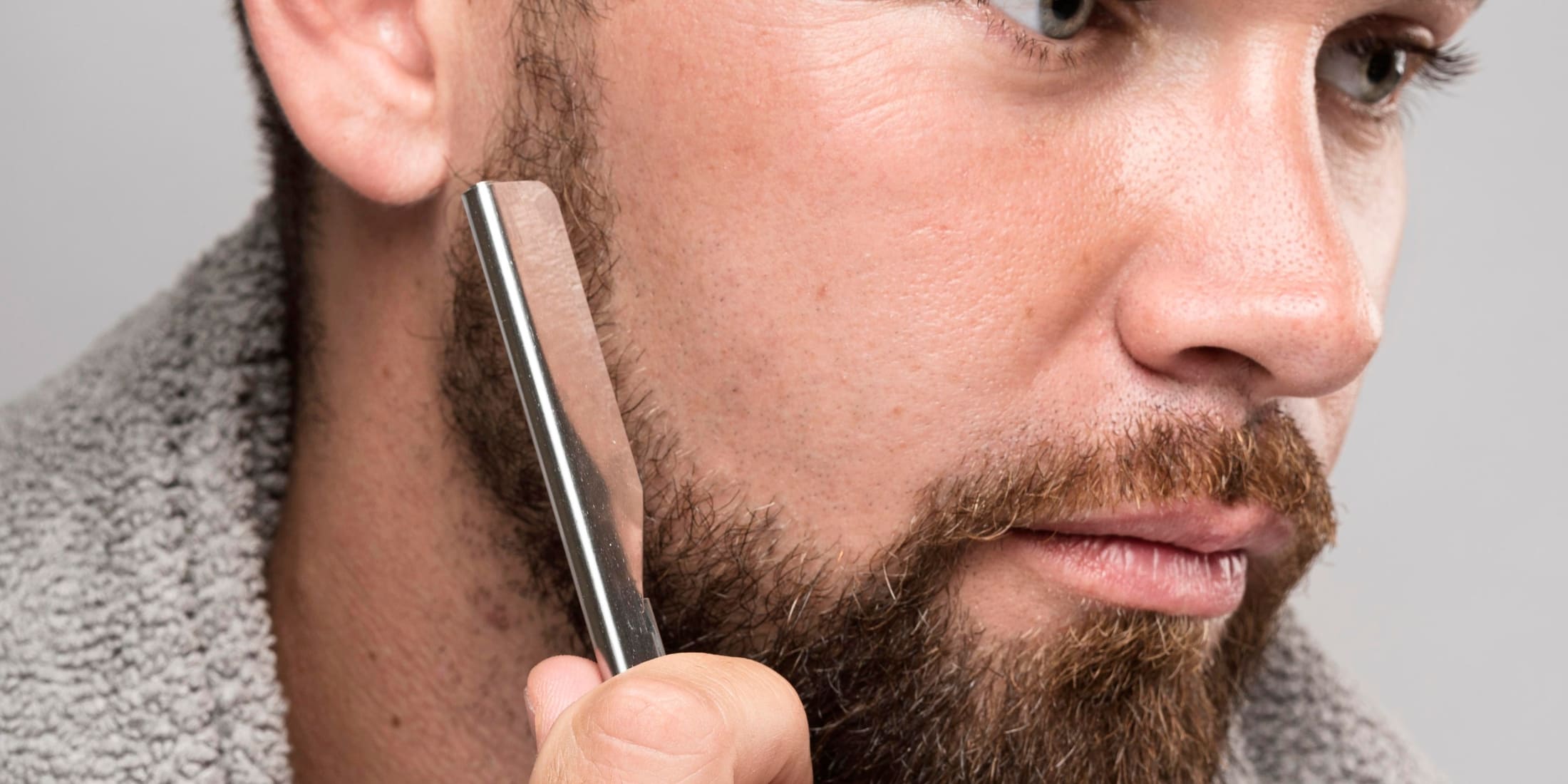Straight Razor vs Safety Razor: Which Shaves Better? | Ultimate Guide
The debate between a straight razor vs safety razor is a hot topic among shaving enthusiasts. Whether you're a seasoned pro or just starting out, knowing the key differences is essential. This article delves into the pros and cons of each, comparing shaving quality, ease of use, maintenance, and costs. We'll help you decide which razor fits best into your grooming routine. Let's explore which tool will give you the perfect shave!
What is a Straight Razor?
A straight razor is a traditional shaving tool that features a long, flat blade. This blade folds into the handle for safety and storage. Often referred to as a "cut-throat" razor, it has been around for centuries and remains a favorite among shaving enthusiasts for its classic appeal and exceptional shaving quality.

Benefits of Using a Straight Razor
Using a straight razor comes with several noteworthy benefits:
-
Close Shave
- Provides an incredibly close shave, superior to safety razors, with fewer passes needed.
-
Precision
- Allows for precise control, ideal for shaping sideburns, mustaches, and beards.
-
Cost-Effectiveness Over Time
- Though initially expensive, a well-maintained straight razor can last a lifetime, requiring only occasional honing and stropping.
Drawbacks of Using a Straight Razor
Despite its benefits, a straight razor does have some drawbacks to consider:
-
Skill Level Required
- Requires time and practice to master, making it challenging for beginners.
-
Maintenance and Care
- Needs regular stropping and periodic honing, which can be more time-consuming than replacing safety razor blades.
-
Initial Cost
- High upfront cost for a quality razor, along with additional expenses for a strop and honing stone.
In the debate of the straight razor vs safety razor, it's clear that a straight razor offers an unparalleled shaving experience for those willing to invest the time and effort.
Its benefits in terms of shave quality, precision, and long-term cost savings are substantial.
However, the required skill, maintenance, and initial cost might make it less appealing to some users.
What is a Safety Razor?
A safety razor is a shaving tool that features a protective guard between the blade and the skin. This design reduces the risk of cuts and nicks, making it a popular choice for many. Safety razors typically use replaceable blades, which are easily accessible and come in various types to suit different skin types and preferences.

Benefits of Using a Safety Razor
Safety razors offer several advantages that make them a great choice for many shavers:
-
Ease of Use
- User-friendly design with a protective guard, making it easier for beginners to achieve a smooth shave.
-
Safety Features
- Built-in safety guard reduces the risk of cuts and razor burn, ideal for sensitive skin and beginners.
-
Accessibility and Availability of Blades
- Replacement blades are widely available in stores and online, offering convenient maintenance.
Drawbacks of Using a Safety Razor
While safety razors have many benefits, they also come with a few drawbacks:
-
Cost of Blades
- While the razor itself is affordable, the cost of replacement blades can accumulate over time.
-
Shaving Experience Compared to Straight Razors
- May not provide as close or precise a shave as a straight razor, though it offers a good balance of convenience and performance.
In the straight razor vs safety razor debate, safety razors stand out for their ease of use and safety features. They're an excellent option for those who prioritize convenience and reduced risk of cuts.
However, if you're seeking the closest shave possible and are willing to invest in learning a new skill, a straight razor might still be the better choice.
Straight Razor vs Safety Razor: Comparison
When deciding between a straight razor vs safety razor, it’s essential to compare various aspects to determine which one suits your needs best.
Shaving Quality
1. Closeness of Shave
- Straight Razor: Delivers an exceptionally close shave, cutting hair at skin level.
- Safety Razor: Provides a close shave, but not as close as a straight razor due to the safety guard.
2. Smoothness and Skin Feel
- Straight Razor: Leaves skin very smooth and often feeling softer.
- Safety Razor: Offers a smooth shave, but may require an additional pass for ultimate smoothness.
Ease of Use
1. Learning Curve
- Straight Razor: Requires practice and skill; beginners need time to master the technique.
- Safety Razor: Easier to use immediately; safety guard aids beginners.
2. Daily Usage
- Straight Razor: More time-consuming due to careful technique.
- Safety Razor: Quicker and more convenient for daily use, suitable for busy schedules.
Maintenance and Longevity
1. Blade Care and Sharpening
- Straight Razor: Requires regular stropping and occasional honing.
- Safety Razor: Minimal maintenance; just replace the blade.
2. Replacement Frequency
- Straight Razor: Lasts a lifetime with proper care.
- Safety Razor: Blades need regular replacement, typically every 1-2 weeks.
Cost Analysis
1. Initial Investment- Straight Razor: Higher upfront cost for the razor and accessories (strops, hones).
- Safety Razor: More affordable initially, but replacement blades add up over time.
2. Long-Term Costs
- Straight Razor: Cost-effective long-term with no regular blade purchases.
- Safety Razor: Ongoing blade replacement costs accumulate, making it more expensive over time.
Safety and Risk of Cuts
1. Risk Factors
- Straight Razor: Higher risk of cuts and nicks due to the exposed blade, especially for beginners.
- Safety Razor: Lower risk due to the protective safety guard.
2. Safety Features and Precautions
- Straight Razor: Requires careful handling and technique to avoid injuries.
- Safety Razor: Features guards that minimize the risk of cuts, making it easier to use safely.
In the straight razor vs safety razor comparison, your choice will depend on your priorities. If you seek the ultimate close shave and are willing to invest time in learning and maintenance, a straight razor is the way to go.
However, if you prefer convenience, safety, and ease of use, a safety razor is a fantastic option. Each has its unique advantages, making both worthy contenders in the quest for the perfect shave.
Factors to Consider When Choosing Between Straight Razor and Safety Razor
Deciding between a straight razor vs safety razor involves considering several personal factors. Here's what you should think about to make the best choice for your shaving routine.
Skin Type and Sensitivity
- Sensitive Skin: A safety razor is preferable due to its safety guard, reducing irritation and the risk of nicks and cuts.
- Tougher Skin: A straight razor offers a close, smooth shave, ideal for those with less sensitive skin.
Shaving Habits and Frequency
- Daily Shavers: A safety razor offers convenience and speed for maintaining a clean look efficiently.
- Occasional Shavers: A straight razor provides precision and a luxurious experience for less frequent shaves.
Personal Preferences and Lifestyle
- Tradition: A straight razor offers a classic, rewarding shaving experience for those who appreciate traditional grooming.
- Convenience: A safety razor provides a hassle-free, efficient routine, ideal for a busy lifestyle.
Budget and Willingness to Invest in Maintenance
- Initial Investment: Straight razors have a higher upfront cost for the razor, strop, and honing stone, but can be cost-effective over time.
- Long-Term Costs: Safety razors are cheaper initially, but replacement blade costs accumulate over time.
- Maintenance Commitment: Straight razors need regular stropping and occasional honing, while safety razors require minimal maintenance.

Conclusion
Choosing between a straight razor vs safety razor ultimately boils down to your personal preferences, lifestyle, and shaving needs. Both options have their unique advantages and can provide an excellent shaving experience.
-
Straight Razor:
- Pros: Delivers an exceptionally close shave, offers precision, and can be cost-effective over time.
- Cons: Requires a higher skill level, regular maintenance, and a significant initial investment.
-
Safety Razor:
- Pros: Easy to use, features built-in safety measures, and blades are readily available.
- Cons: Blades need frequent replacement, and the shave might not be as close as that of a straight razor.
Here are a few key points to remember when making your decision:
- Skin Type: If you have sensitive skin, a safety razor might be more suitable. For those with tougher skin, a straight razor can offer an incredibly smooth shave.
- Shaving Habits: Daily shavers might prefer the convenience of a safety razor, while occasional shavers might enjoy the luxury and precision of a straight razor.
- Lifestyle and Preferences: Traditionalists who appreciate a grooming ritual might gravitate towards a straight razor. Those seeking a quick and efficient shave might find a safety razor more fitting.
- Budget: Consider both the initial investment and long-term costs. A straight razor requires a higher upfront cost and ongoing maintenance, while safety razors have a lower initial cost but recurring blade expenses.
By weighing these factors, you can choose the razor that best fits your needs. Whether you opt for the classic precision of a straight razor or the modern convenience of a safety razor, you'll be well on your way to achieving a great shave.
Remember, the best razor is the one that makes you feel confident and comfortable. Happy shaving!





